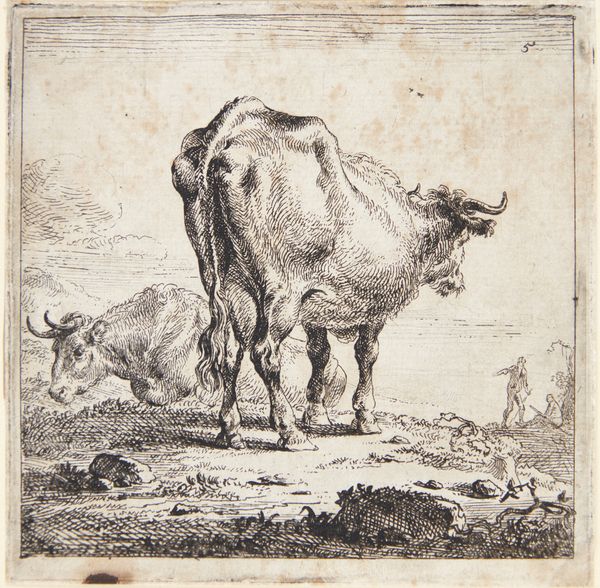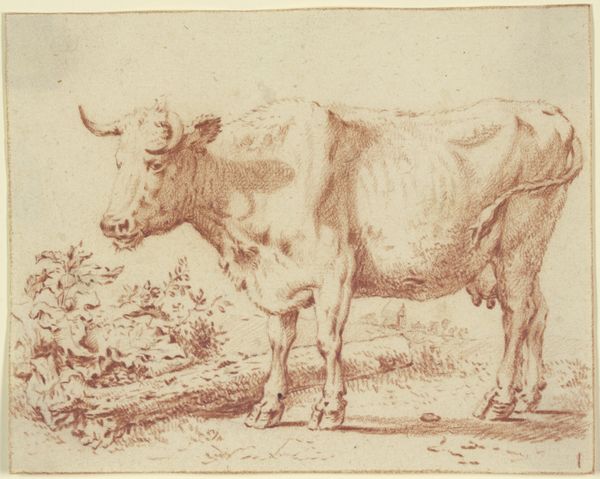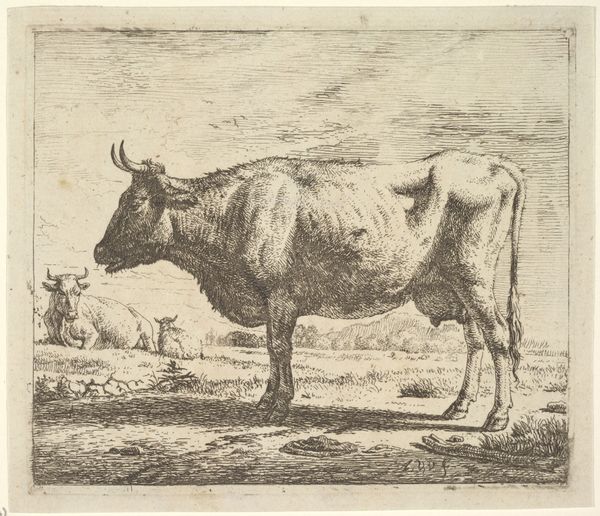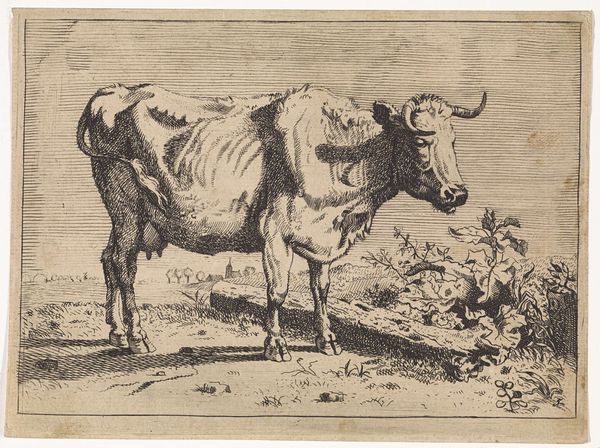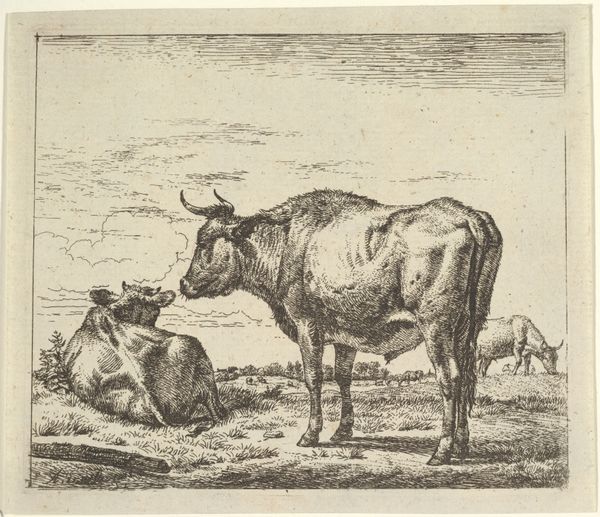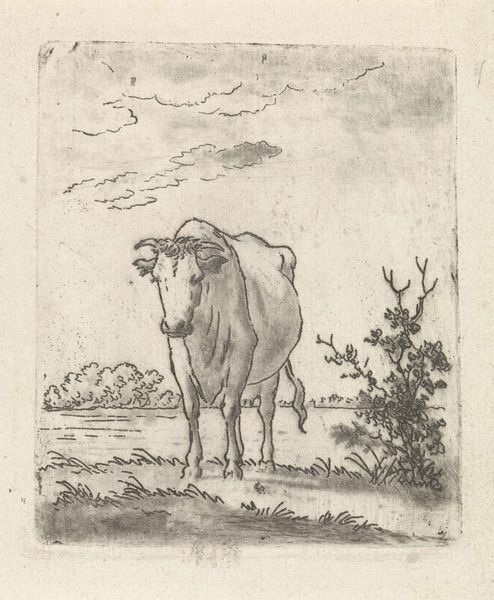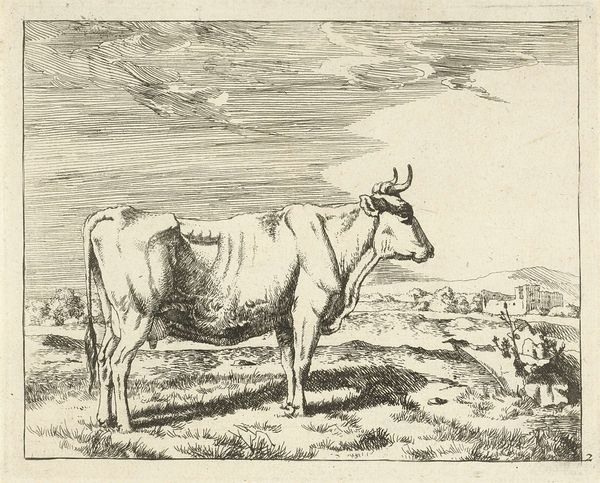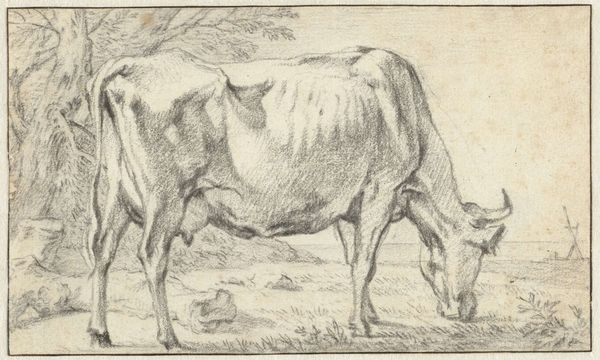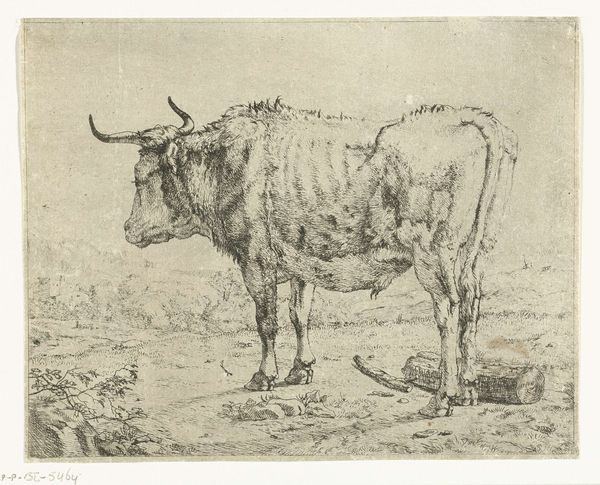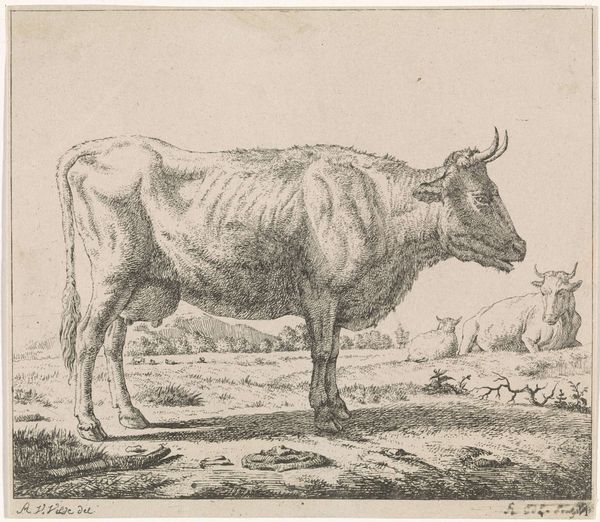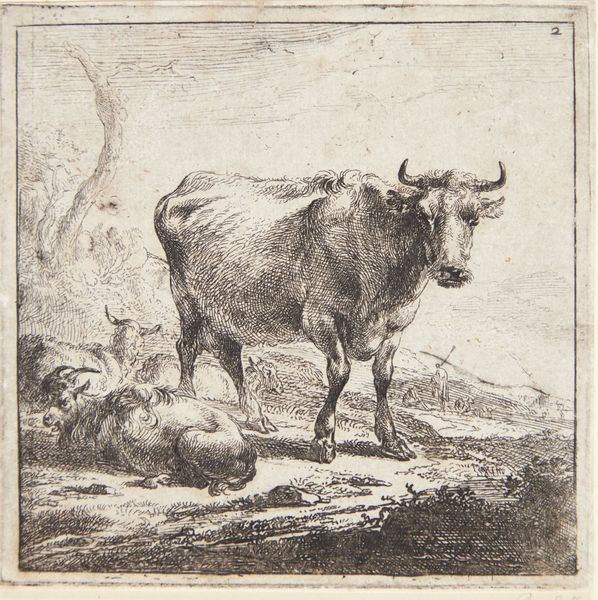
print, etching
#
baroque
# print
#
etching
#
landscape
#
figuration
Dimensions: 95 mm (height) x 98 mm (width) (plademaal)
Editor: Here we have Nicolaes Berchem's "Gående ko," or "Walking Cow," an etching from 1644. It’s quite small, and seeing the detail achieved through etching is really impressive. What's particularly interesting to you about it? Curator: Well, look at the lines. Each mark made by Berchem required careful consideration of the copperplate, the acid's bite, and the final printed image. Etching democratized image production, moving away from the more controlled, singular art object and enabling the relatively cheap creation of multiple prints. Consider the material reality: who owned these images? Where were they displayed? Editor: So, it’s about more than just the cow itself? Curator: Exactly. Think about the pastoral scene itself. The market for these kinds of idyllic landscapes rose along with urban populations. These images fulfilled a need, a manufactured desire for an imagined, simpler, rural life. Even the way Berchem uses the etching needle to render the textures of the cow's hide and the surrounding foliage becomes a statement about the labor involved, both his own and the animal's within a social and economic system. What kind of life might this cow have lived? What were its material conditions? Editor: That's fascinating. I never really considered the production and distribution like that before. It's easy to get lost in the image and forget about the labor behind it and the system around it. Curator: It’s all too easy to ignore the hows and whys of art. We often focus solely on aesthetics. But by bringing the means of production into focus, we understand the cow, the landscape, and the artist himself in a completely different light.
Comments
No comments
Be the first to comment and join the conversation on the ultimate creative platform.
